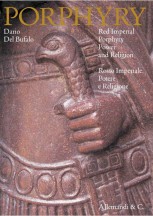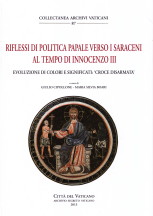Prof. Dario Del Bufalo
Specialist in stone sculpture , colored marbles , glyptics , restoration and Geoarchaeology
The Sarcophagus of Saint Constance transferred to the Vatican Museums (1791)
The sarcophagus of Constantina was built at the same time as the church (4th century) and was placed in a niche opposite the entrance.
The lid is decorated with garlands supported by protomes, while the body is decorated in relief with scenes of cupids and the grape harvest adorning the upper register, a theme which is repeated in the mosaics in the annular vault of the Mausoleum. The symbolism of the grape harvest, which in funerary art dates back to antiquity and is linked to Dionysian cults, was the reason why this building was incorrectly identified as a temple of Bacchus. In the 17th century it became a meeting place for Dutch and Flemish artists, who joined together to form an association called Bentveughels (Dutch for ‘birds of a feather’). On entry of a new member to the association, the so-called “Feast of the Baptism” was celebrated, which consisted of a Bacchic feast with plenty of wine and consequential drunkenness. This led to the belief that the temple was dedicated to Bacchus and that Constance’s Porphyry tomb was the altar to the god. The names of some Bentveughels, graffiti done by the artists themselves, can still be seen in some ambulatory niches.
In 1720, Clement XI prohibited this riotous and drunken custom that desecrated the ancient Mausoleum. Yet after a few decades, in 1791, perhaps as a result of the celebratory activity having recommenced in the Mausoleum of Constance, Pio VI decided to definitively move the large, Porphyry sarcophagus so as to better preserve it, to the Vatican Museums, its current location.
In this article, we would like to recount these events, which we found in an 18th century.
drawing that “photographed” the moment of studying the transferral (from the Mausoleum on the Via Nomentana to the Vatican Museums) of the Egyptian Red Porphyry Sarcophagus of Saint Constance that Pius VI ordered and had carried out in 1791.
In the lower right, one can see the characters (see detail) studying the monument and it seems that the master builder is giving orders to two Carpenters-Marble Craftsmen, who are depicted with their tools.
In this detail, one can understand more clearly what is happening in the drawing: the Architect is in the foreground, an elegant figure with pen and paper taking notes and drawings, and he has just put his cloak, hat and cane on a marble block behind him. In the middle ground, the master builder or master mason (seen from behind), wearing a tunic and hat, indicates the sarcophagus to two characters with tools, who we can interpret as being two Carpenters-Marble Craftsmen.
In fact, the man to the left holds a long “crowbar” (a levering tool for the lifting) and the man to the right, with hat in hand, has a shoulder bag with two cylindrical metal bars inside, the so-called “rollers” (tools used to move large blocks of marble). We can see that to the left pieces of marble have been placed under the sarcophagus (generally called “cut-offs”) clearly found in situ, as there is a reused upturned column base beneath a marble cube (used as a base for creating the lever) in order to test, with the long crowbars, the weight and difficulty to move such a large and heavy Red Porphyry sarcophagus. Indeed, one can see that the sarcophagus lid has slightly shifted as a result of the test. This therefore seems to us to be the moment shortly before its transferral that the artist wanted to pin to paper, as evidence of its original location.
 English
English Italiano
Italiano



